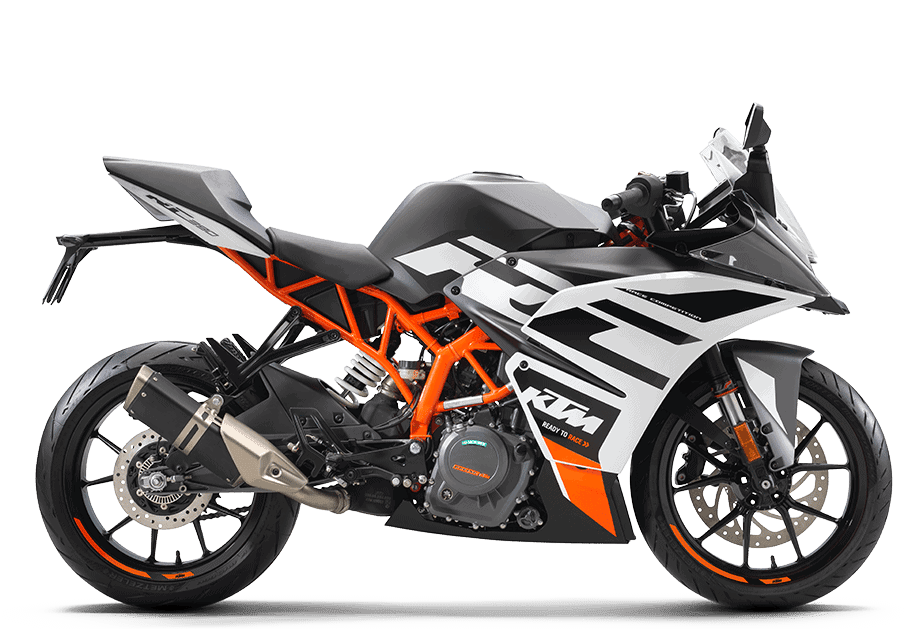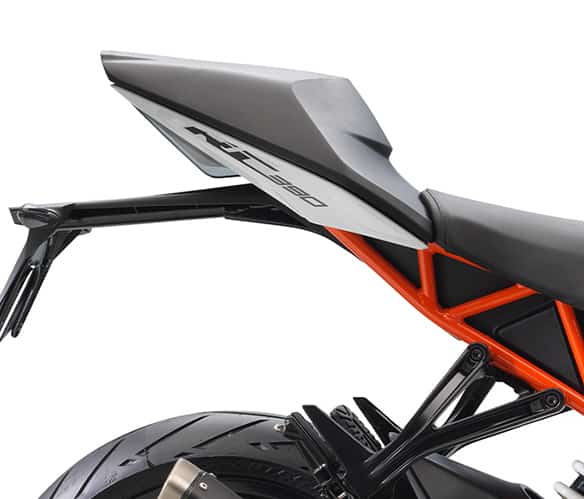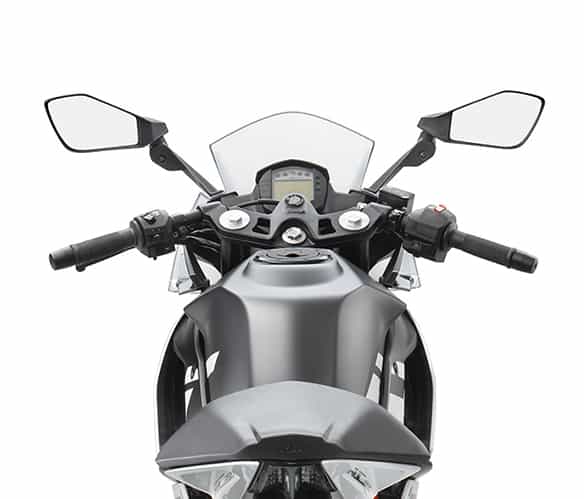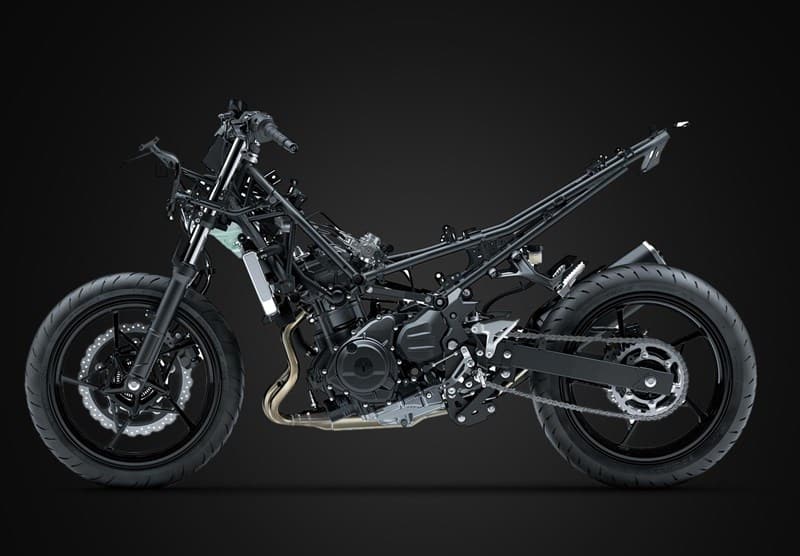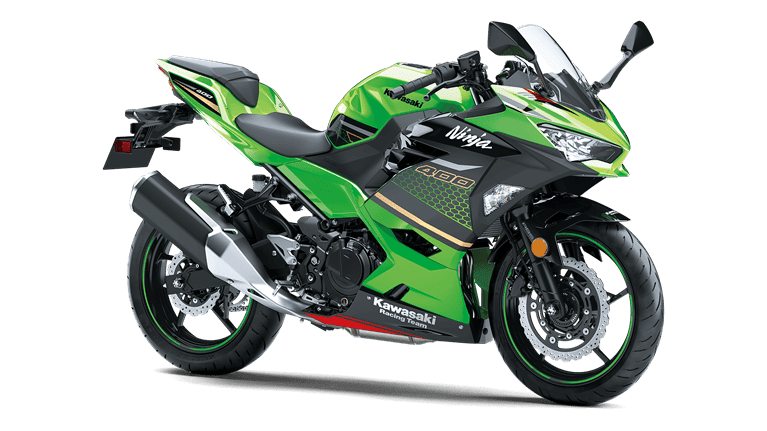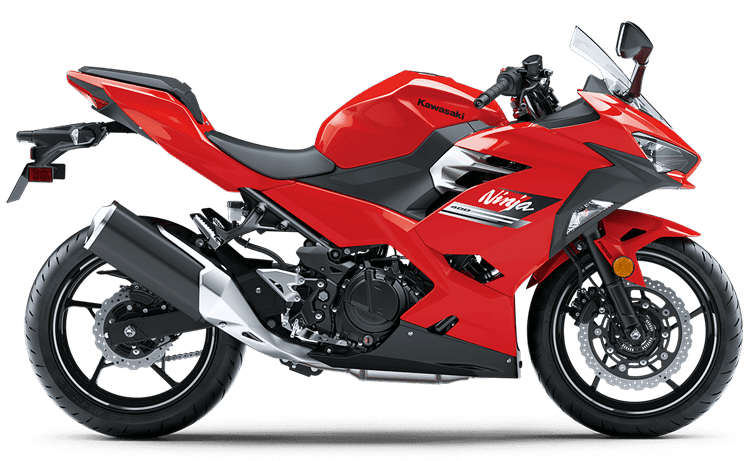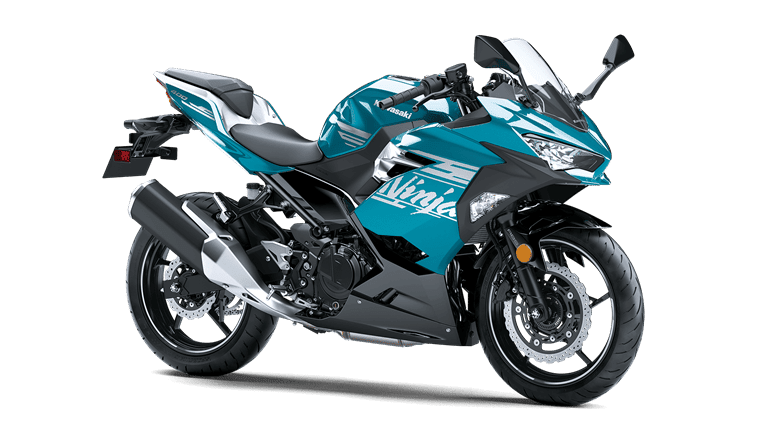Who doesn’t love sports bikes? Lightweight sport bikes have a league of their own, and bike enthusiasts are always eager to explore as much about these bikes as possible.
If you have ever sat down with lightweight sportbike fans, you must have heard them compare horsepower, top speed, handling, etc.
Well, lightweight sportbikes are all the rage now, and these have been a hot topic for a while now. Among the top contenders are KTM RC 390 and Kawasaki Ninja 400.
If you are also trying to figure out which lightweight sportbike to buy for yourself and are caught between the hot debate of KTM RC 390 vs. Kawasaki Ninja 400, you have landed on the right platform.
We will take you through all the important aspects of KTM RC 390 vs. Kawasaki Ninja 400 and help you decide for yourself. Let’s dive into it.
KTM RC 390 vs Kawasaki Ninja 400: The Showdown
The first thing you should know is that these lightweight beasts are almost similar on paper and offer identical specs at your fingertips. However, it’s the riding experiences that differentiate between the two, and a head-to-head comparison between the two beasts will help narrow down your decision.
Engine Breakdown
The Single-Cylinder KTM RC 390
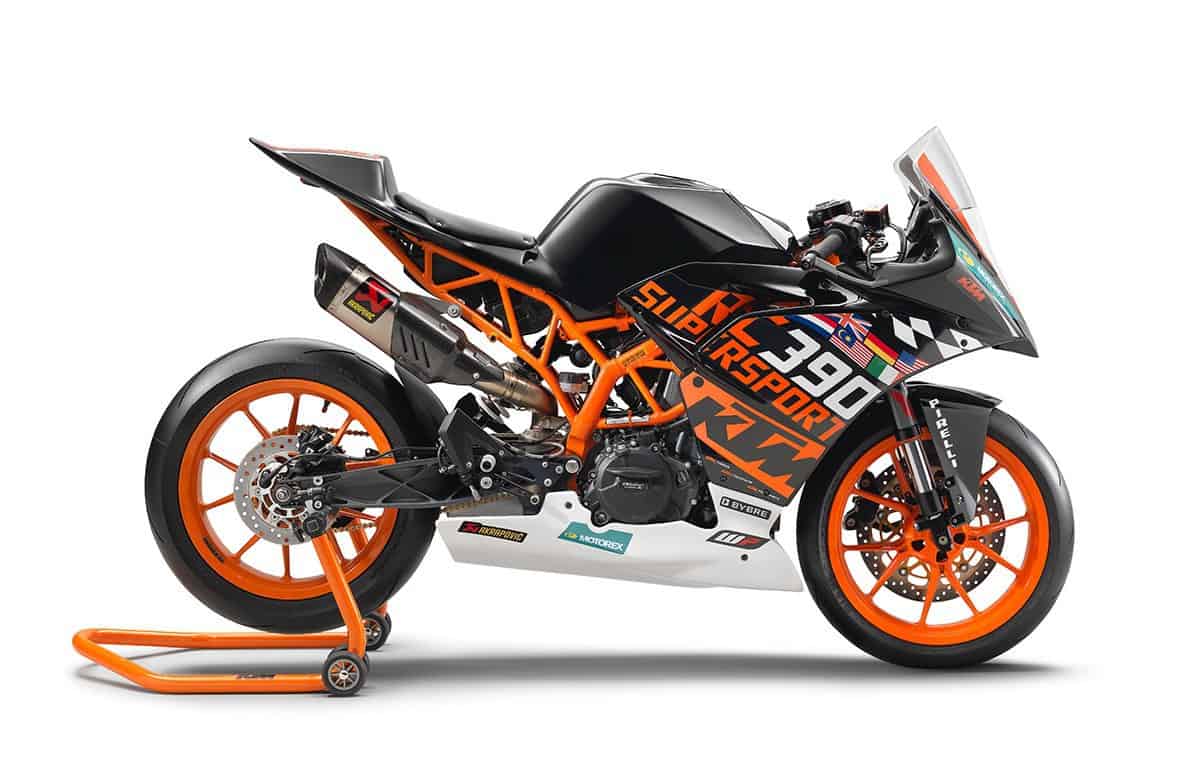
While other sportbikes come with at least twin cylinders, the KTM RC 390 only offers a 373cc single-cylinder engine.
This may seem like a drawback at first, but the single 373cc cylinder engine is more than capable of matching up with the topmost bikes in the field.
The single-cylinder engine offers 40 horsepower at your fingertips and comes with a stunning RPM of 11,000. The torque curve is also friendly enough for beginners and enthusiasts and still a powerful one for advanced and veteran riders.
The engine offers a smooth transition from ignition to 5,000 RPM, and you won’t even notice anything. However, once you cross the 5,000 RPM mark, you will start noticing a slight surge that keeps getting stronger until max RPM.
The Parallel Twin-Cylinder Kawasaki Ninja 400
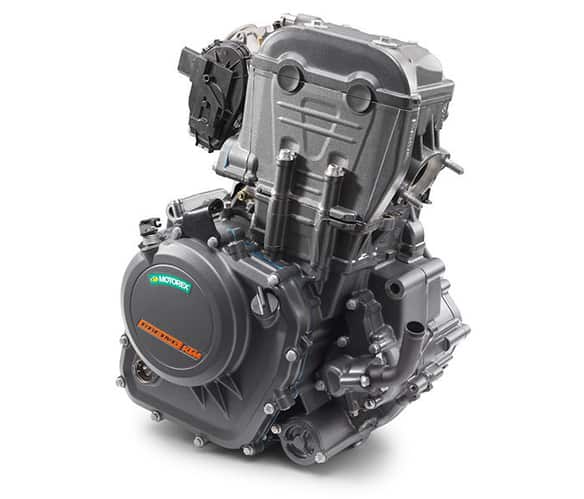
It comes with a parallel twin-cylinder 399cc engine, capable of offering 49 horsepower and a max RPM of 12,000 at your disposal.
It also comes with a nice torque curve that is perfect for entry-level motorcycles. One of the best things about this bike is that it doesn’t jump forward as quickly as other lightweight sportbikes on the market.
The transition from ignition to 5,000 RPM is smooth, and when you rev to maximum speed, you will not feel any jitters or jumps during this transition.
Instead, this bike will quickly get you to top speed without any problems. Additionally, the Kawasaki Ninja 400 is very responsive and smooth in reaction to any revs, and you can easily make your way through the traffic without any issues.
You do not have to worry about getting to the top speed to enjoy a smooth cruise, and you can instantly enjoy a smooth cruise at any speed you desire.
Engine Comparison
As obvious from the table above, both bikes use four valves per cylinder and a liquid-cooled cooling system to take care of any heat during maximum revs.
Both bikes also utilize a self-start mechanism to offer a keyless starting experience. The fuel injection system also helps get the most out of your mileage without any fuel vapors.
Fuel Consumption
The 10-Liter KTM RC 390
On the other hand, you have KTM RC 390 that comes with a 10-liter fuel tank capacity. It may look a little on the low side at first, but once you factor in the 1.5-liter reserve fuel capacity, it is enough to compete with some of the top-notch sportbikes in the market right now.
Moreover, you can get an amazing mileage of 58 mpg with a single 46mm throttle body fueling capacity.
The 14-Liter Kawasaki Ninja 400
Kawasaki Ninja 400 comes with a fuel tank capacity of 14.0 liters. However, there is no reserve fuel capacity for this bike. Therefore, you will have to stop by the nearest petrol pump to get it juiced for the rest of the journey.
You can get amazing fuel efficiency and mileage of 58.83 mpg with two 32mm throttle bodies. This helps you get wherever you want without any issues.
Fuel Comparison
Dimensions:
The 364-Pound KTM RC 390
KTM RC 390 comes with a curb weight of 364 pounds approximately. This helps rank this bike among the lightweight beasts in the market while offering a smooth sailing experience at your fingertips with enough curb weight to tackle air friction and resistance.
You get to enjoy a seat height of 32 inches which is enough for a tall rider. The trail is 3.5 inches, whereas the wheelbase is located 52.8 inches from the ground. With a standard ABS system, these dimensions make it perfect for tall riders and medium riders alike.
The seating experience is not a comfortable one, as the design is not suitable for long commutes. However, it is perfect for short rides, highways, or tracks.
The 368-Pound Kawasaki Ninja 400
On the other hand, Kawasaki Ninja 400 comes with a curb weight of 368 pounds. This bike is suitable for short riders as it comes with a seat height of 30 inches and a trail height of 3.6 inches. The wheelbase is 53 inches from the ground, and the rake is located at 24.7 degrees.
This bike is designed for longer commutes, and you can travel around for hours without getting any pains in your lower body. It is also suitable for tracks and highways, but the curve doesn’t allow you to take sharp turns.
Chassis
The Steel Trellis Frame of KTM RC 390
KTM RC 390 comes with a steel trellis frame architecture just as its predecessor, Duke. However, there are a few modifications that help enhance the overall riding experience, such as the steering had ankle adjustment.
The steering wheel angle has been increased to 66.5 degrees. This modification allows for a shorter trail, shorter wheelbase, and also offers the riders more ground clearance for sharer turns.
Another important modification in this design is the brakes that offer a 320-millimeter rotor and a repositioned caliper. This allows for quick braking features, and you can gain more control over your riding experience.
In addition to this, the brilliant KTM RC 390 also comes with an upside-down WP suspension system that offers 43 outer tube diameters.
This helps enhance the overall riding experience with the help of a dual-channel ABS system. One thing you should know about this ABS system is that it can be manually turned off for manual control.
The All-New Chassis of Kawasaki Ninja 400
On the other hand, the brilliant Kawasaki Ninja 400 comes with an all-new chassis. It uses a trellis-type frame and offers more durability and rigidity at your fingertips. You will find a bolted swingarm mounting plate at the rear of the engine. This plate is made from aluminum.
There is also an adjustable preload gas-charged shock in the rear of this bike that allows for a higher stabilization level than its predecessors. Moreover, you will find that the Kawasaki Ninja 400 comes with a 41-millimeter telescopic fork in the front.
Design
The Brand-New KTM RC 390
The KTM RC 390, has received an upgrade that gave it a redesigned body panel and a side slung exhaust with a sharper vee. Not only does this make the bike look slimmer, but it also makes a greater degree of body composition.
The Razor Sharp Kawasaki Ninja 400
As it takes styling cues from its larger supersport relatives, the 2018 Kawasaki Ninja 400 looks very amazing. The specifics and the triple-peak pattern tail on the shin spoilers are similar to those on the Kawasaki Ninja H2. The Ninja 400’s wicked sharp design is undeniably Kawasaki.
Other Features
The Fuel-Efficient KTM RC 390
The powerful KTM RC 390 brings amazing features to the table. This bike comes with a pre-assembled slipper clutch so that you do not have to pay any additional amount to your mechanic to help you assemble the slipper clutch.
It is already installed and assembled at the factory, and you only have to get started with the riding experience without getting worried about any assembly of the bike.
Moreover, if you are interested in ride-by-wire throttle technology, you will be happy to know that KTM RC 390 comes with pre-installed ride-by-wire technology. So, if you are interested in enjoying a smoother and crisper throttle response without any jerkiness, this bike is just for you.
If you are an eco-friendly bike rider, you should be happy to know that KTM RC 390 comes with ECVAP (Evaporative Emission Control System) that restricts the fuel vapors from escaping the tank.
This way, you can not only enjoy higher fuel efficiency by reducing fuel losses, but you can also take care of the environment by restricting the number of fuel vapors that are leaked into the surroundings.
When it comes to the instrument cluster and the LCD display, KTM RC 390 uses the same display as its predecessors. It shows all the necessary riding information without getting you distracted.
If you want more visibility in the dark, this brilliant bike comes with an AHO (All-time Headlamp On) function that will allow you to keep on riding without having to switch the lights on and off continuously.
The Upgraded Kawasaki Ninja 400
The brilliant Kawasaki Ninja 400 comes with a wide range of brand-new features that help it easily compete against the top contenders of the market. If you decide to go with the Kawasaki Ninja 400, you will be able to enjoy an assist and slipper clutch.
This clutch can act as a back-torque limiter and a self-servo mechanism to offer you a lighter clutch pull and more autonomous control over your riding experience.
In addition to a lighter clutch pull, the Ninja 400 sportbike also comes with brand new dual-LED headlamps. Headlamps will offer higher visibility in dark places without putting too much strain on your engine. The LED taillight for the Kawasaki Ninja 400 was also revised recently.
Moreover, this bike comes with an instrument cluster that was borrowed directly from Kawasaki Ninja 650. Therefore, you will be able to enjoy the appeal of an upper market superbike without having to pay a fortune.
The high-grade multifunction dash instrumentation keeps you focused on the track while offering the necessary information without any distractions.
You can also enjoy an economic riding indicator that will help you get the best fuel efficiency possible. This indicator tells you when the fuel consumption is low or high so that you can transform your riding experience into a fuel-efficient one.
Moreover, you can also enjoy the “ERGO Fit” with Kawasaki Ninja 400. It means that the seats are designed for maximum comfort and control, and the seats can be adjusted to enjoy the best position for different riders.
There are adjustable parts that allow you to move the seat in different directions for maximum comfort. However, these parts vary from model to model.
Suspension and Brakes
-
The WP APEX Suspension of KTM RC 390
Braking is among the most important elements of judging a lightweight superbike, and you will be happy to know that KTM RC 390 employs thick USD front forks and disc brakes.
KTM RC 390 comes with a 43-millimeter upside-down WP Apex USD fork as the primary front suspension system. When it comes to the rear suspension, this bike uses an upside-down WP Apex mono-shock suspension system to help stop the bike in its place without any issues.
The front brake for KTM RC 390 is a 320-millimeter disc brake that comes with a four-piston radial fixed caliper for emergency braking features.
On the other hand, the rear brake is a 230-millimeter disc brake that offers a single-piston floating caliper to assist with emergency braking features as well as smooth breaking features in any traffic.
-
The Gas-Charged Shock Braking of Kawasaki Ninja 400
If you’re looking for a superbike that offers you thinner suspension systems and disc brakes, then the Kawasaki Ninja 400 is your best bet. You will get to enjoy a 41-millimeter telescopic fork with the front suspension for this model.
When it comes to the rear suspension system, you will get to enjoy a bottom-link uni track and a gas-charged shock with an adjustable preload system to quickly stop the bike in times of crisis.
The front disc brake is a 310-millimeter disc brake that comes with a pre-installed single balanced actuation and a dual-piston caliper for smooth braking features.
On the other hand, the rear brake uses a 220-millimeter petal-disc brake that will offer you the capabilities of a dual-piston caliper for emergency braking features and a smoother braking experience than other bikes in the market.
Braking Comparison
Pricing
The stunning KTM RC 390 comes in a stunning colorway; metallic black with orange highlights. You can get this lightweight sports bike for yourself, and the current price for KTM RC 390 from 2018 is USD 5,549. This is significantly higher than the different models of Kawasaki Ninja 400.
Kawasaki Ninja 400
On the other hand, if you want to go for the amazing Kawasaki Ninja 400, you will get four different variations of this bike.
The first version is the 2018 Kawasaki Ninja 400 ABS bike that is available in two different colors; pearl nightshade teal/metallic spark black or red passion. You can get either of these color schemes for nearly USD 4999.
The second model that you can get for Kawasaki Ninja 400 ABS is also from 2018, but it comes with more improvements than the first model. You can get this for USD 5299, and you can only get this in metallic spark black color.
The third model offers a wide array of useful features, such as dual LED headlamps, and it is available for USD 5499. This model comes in metallic graphite gray/metallic magnetic dark gray or pearl nightshade teal/metallic spark black color scheme.
Lastly, you can get the Kawasaki Ninja 400 KRT edition that is available for USD 5,499. This model offers all the amazing features you can want in a superbike. This is a special edition that is available in two stunning colors that are lime green and ebony.
Therefore, if you are looking for an affordable lightweight superbike, the Kawasaki Ninja 400 is here to offer you four different variations with amazing color schemes. All of these will serve as the perfect entry-level superbikes for fans and biking enthusiasts.
About the author: Michael Parrotte was the Vice President of AGV Helmets America, and a consultant for KBC Helmets, Vemar Helmets, Suomy Helmets, Marushin Helmets, KYT Helmets, Sparx Helmets. In addition, he is the founder and owner of AGV Sports Group.

